Sorted by date Results 26 - 50 of 76
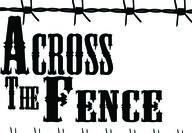
One hundred and fifty years ago, on the fifth day of May, 1865, Judge Michael Cochran and his wife Mary Jane celebrated the birth of a daughter. Born in Cochran Mills, Penn., (the town was named for her father), Elizabeth Jane would become the most daring and famous female newspaper reporter of the nineteenth century. The judge was a prominent and successful man and the family was quite large. Judge Cochran had 10 children from a previous marriage and there were five more with Mary. Among the...
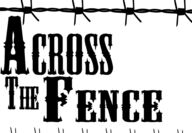
Folks in Arizona tell their tales of Boastful Bill and Lone Star, Texas cowboys have been bragging about their tallest of tall tale heroes, Pecos Bill ever since that first Longhorn maverick was roped and branded. From the Pacific Northwest the legend of Paul Bunyan, and his blue ox Babe, have grown to gigantic proportions. And not to be outdone, Nebraskan's have immortalized Febold Feboldson, who was created by Wayne Carroll writing for a Gothenburg, Neb., newspaper in the 1920s. But there are...

On March 4, 1933, Franklin Delano Roosevelt was sworn into office as the 32nd President of the United States. His controversial 12 years in the presidency would garner him the reputation of being one of the three most effective leaders of the nation, a distinction he holds along with George Washington and Abraham Lincoln. Immediately after his election he called a special session of the U.S. Congress and began outlining and implementing his "New Deal," intended to pull the United States out of...

Dean E. Starr Petty Officer 2nd Class U.S. Navy 1950-1954 EDITOR'S NOTE: This story is one of many American Veteran accounts published in The Sidney Sun-Telegraph. The writer, who is from Potter, is conducting the interviews as part of the Library of Congress' Veterans History Project. This article originally pubished on June 16, 2012. Dean Starr was 11 when the Japanese attacked our Naval forces at Pearl Harbor. From the concern in his dad's voice, he knew something dreadful had happened....
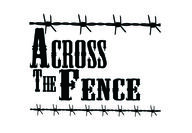
The date of April 9, 2015, marked the 150th anniversary of Lee's surrender at Appomattox. Thirty days later that bloody conflict – of four long years – would come to an official end. The negotiations leading up to the meeting of Generals Grant and Lee, and that historic event are best told by their own correspondence and eyewitness accounts as preserved in historical documents. Grant to Lee: "5 P.M., April 7th, 1865. The results of the last week must convince you of the hopelessness of fur...
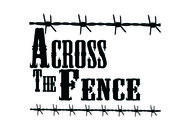
In the boom days of Kearney, Neb., during the late 1880s, Henry David Watson embarked on what was quite possibly one of the grandest agricultural undertakings ever attempted on the Great Plains. The year 1888 marked the beginning of H. D. Watson's grandiose and historic Watson Ranch. Watson had come west from Greenfield, Massachusetts and partnered with George W. Frank, a prominent New York doctor turned speculator, who had purchased large land holdings from the U.P. Railroad. Frank helped to...
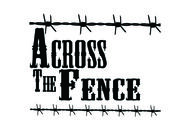
Throughout the world, there is likely no single animal more honored and admired than the horse. The most ancient of Asian civilizations revered the horse for its strength, courage and intelligence. In North America, it was thought that the horse had been introduced by Spanish explorers and that before that time there were no horses on the continent. In the mid-19th Century, the man who knew more about horses than any other was Professor Othniel Charles Marsh of Yale University. When Thomas Huxle...
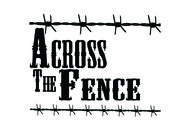
This past week, my wife Deb and I made a four-day road trip to entertain in eastern and central Nebraska. The first day was the longest stretch as we left Bushnell in the morning and arrived in West Point in the late afternoon. In recognition of Nebraska's Ag Week, I had the honor to perform for a crowd of nearly 400 people involved in the business of agriculture in that area. I was reminded that the state of Nebraska ranks third in beef production and Cuming County – West Point is the county s...
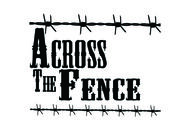
"The savage had not found this prairie, til some who hired us came this way to make the grasses pay and pay for some raw greed no wise and wary regard for grass could satisfy. The old ones wept, and so did I." (From the poem "Anthem" by Texas native, Buck Ramsey: Jan. 3, 1938 – Jan. 9, 1998) Until the 1930s, the Great Depression of 1873 stood as the greatest financial crises, in Europe and North America. The rapid expansion of the railroads had consumed most all available investment capital a...
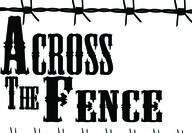
The date of April 9, 1865, marked the end of four, long and bloody years of the American Civil War. During those years, while the states were divided among themselves, the nation was also at war with the Native Americans of the plains and the Southwest. Back in April 1865, Bosque Redondo was the name given the so-called reservation near Fort Sumner, N.M., though to the 8,500 Navajo and 500 Mescalero Apache Indians confined there, it seemed more like prison. By 1866, the number of Indians...
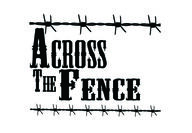
In the aftermath of the gallant charge and subsequent defeat of the Texas Lancers at the Battle of Valverde, Col. Canby ordered his New Mexico brigade of volunteers to attack the Confederate left flank. Col. Christopher "Kit" Carson, in command of the newly formed and untested New Mexico brigade, moved his men to an advance position across the Rio Grande where they were supported by an artillery battery under the command of one Capt. McRae. As Col. Carson's Union troops were assembling, two...
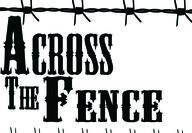
From the first shot fired upon the Union ship "Star of the West" at Fort Sumter, to the last shot fired from the Confederate warship the "CSS Shenandoah" near the Aleutian Islands, nearly 700,000 Union and Confederate soldiers would lay buried on or near the hundreds of battlefields from the banks of the Missouri to the eastern seaboard. Gettysburg, Chancellorsville, Fredericksburg, Bull Run, Manassas and scores more sound familiar to most who are scholars of the Civil War battles. But for every...
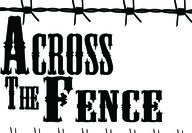
Being from northeastern Kansas, and growing up a little more than 15 miles from the Missouri River and the historic Lewis and Clark Trail, it's little wonder that I've long been a student of the unprecedented journey of The Corps of Discovery. Any family trip to Atchison took us past Independence Creek that fed into the Missouri River and the site where the Corps of Discovery observed the first 4th of July ever celebrated west of the Mississippi. The year was 1804 and the Lewis and Clark...
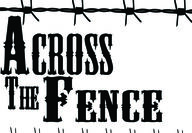
The new moon was but a thin crescent of silver in the early midnight hour of March 15, 1885, when a mob of more than 30 torch-bearing, rifle-toting citizens left the Village of Spring Ranche, Neb., on a one and one-half mile jaunt to Taylor's sod ranch house. The mob surrounded the large, squat soddy that housed: the widow, Elizabeth Taylor, her mother, Margaret Jones, twin brother, Tom, 5-year-old daughter, Maggie and hired hands, John Farrell, Texas Bill, A. Clark, Nelson Seely and Luther...
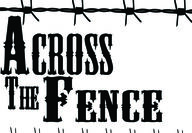
On Feb. 3, 1889, Mamie's grandmother was assassinated by a shotgun blast, in the back, from an unknown assailant. Some suspected that it was her daughter Rosie Lee, Mamie's birth mother, who yielded the shotgun that ended the short and turbulent life of Myra Maybelle Reed. However, no one was ever charged in the killing. Rosie Lee was a suspect because of her rage against her mother who had forged Rosie's signature on a document that relinquished the infant Mamie to an orphanage in Siloam...
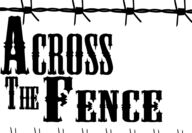
Returning from the Colorado Cowboy Gathering in Golden, Colo., this past weekend, Deb and I decided to take the roads less traveled. Instead of the more direct Interstate 76 we traveled north on Highway 85 out of Brighton, through Fort Lupton, past Fort Vasquez to Highway 34 then headed east through northeastern Colorado's sandhills following the south fork of the Platte to Fort Morgan. I had traveled this Highway 34 route several times before, as a teenager, when I'd visited my grandparents in...

William Fitch Kelly, a reporter for the Nebraska State Journal, sent a dispatch to his editors from Wounded Knee Creek (via Rushville, Neb.) on Dec. 29, 1890. The eyewitness account included the following: "Soon the mounted troops were after them, shooting them down on every hand. ... Just now it is impossible to state the exact number killed outright. The soldiers are shooting them down wherever found, no quarter given by anyone. ... Before night I doubt if either a buck or squaw out of all...
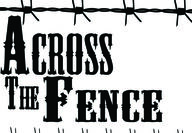
Variously called the "Messiah Craze" and the "Ghost Dance Craze," this new religion stirred the passions of a small minority of the roughly 25,000 Sioux who were located on the Pine Ridge, Rosebud, Cheyenne River, Crow Creek and Standing Rock reservations. While the basic premise of the religious movement was relatively the same at each camp, there were some ceremonial differences and varying beliefs in what the coming Messiah would accomplish. However, the common thread among all the bands was...
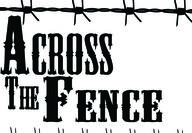
The year 1990 marked the 100th anniversary of the massacre at Wounded Knee. That 100th anniversary heralded the first Big Foot Memorial Ride made by descendants of the people of the Sioux Nation who lived through, or died during, the notorious massacre on December 29, 1890. In 1990, there were fourth- and fifth-generation descendants who wanted to make a ride in memory of Sioux Chief Unpan Gleska, (Spotted Elk, most commonly known by the whites as Big Foot) and the men, women and children who...
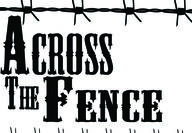
In the seven days between Christmas Eve and New Year's Eve most of us will, at times, find ourselves reflecting upon the events of the past year and looking forward to the possibilities of the new. Jan. 1, 2015, was for a brief moment a blank page, a clean slate, an untraveled frontier of new beginnings and unlimited possibilities. Many of us start each new year with eager anticipation of what might lay ahead, and others may dread the coming months. Each of us have differing circumstances and...
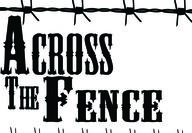
This year marks the 100th anniversary of the "unofficial" Christmas Truce of 1914. On June 28, 1914, Yugoslav nationalist Gavrilo Princip assassinated the Austria-Hungary heir to the throne, Franz Ferdinand. The assassination stirred a diplomatic crisis that would escalate to the scale of world war, The Great War. A month later on July 28, Austria-Hungary declared war on Serbia and invaded. Russia came to the aid of Serbia and Germany invaded Belgium and Luxembourg and advanced on France. This i...
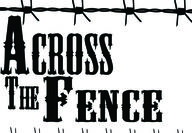
My column this week is about two different flags and several men who pledged allegiance to the flag that represented their personal beliefs and convictions. The story of these men and the different flags that they honored is entwined within the context of the American Civil War and the banners that hundreds of thousands of men fought under and died for. For the Union, the flag was The Stars and Stripes and for the Confederacy it was The Stars and Bars. Right or wrong, each flag stirred the...
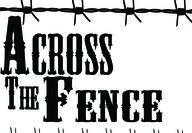
Silas Stillman Soule was born in late July of 1838 in Bath, Maine. His father, Amasa Soule, was an American citizen of Dutch decent though Silas seemed more akin to his Irish friends. Adapting a convincing Irish brogue to match that of his fellow workers in eastern factories, Silas easily gained the admiration of those he encountered. As a young man, his inclination for good-humored mischief often resulted in fisticuffs that his "Irish" façade readily welcomed. In the early 1850s, Amasa became...
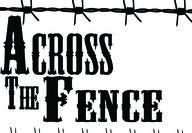
"Yesterday, Dec. 7, 1941, a date that will live in world history." So read the first line of the draft handed to President Franklin D. Roosevelt on the morning of Dec. 8, 1941. The original draft of that speech shows that President Roosevelt drew a sharp line through the words "world history" and boldly wrote "infamy." That speech and its opening line has been indelibly etched on the collective memories of generations of Americans. Its consequences have been carved in the names, dates and ranks...

The Harmar campaign against the Native Americans of the Northwest Territory, in the autumn of 1790, resulted in the highest casualties of any previous battle of the U.S. Army. After the final skirmish of that campaign, General Josiah Harmar and the remaining rag-tag force under his command retreated from the field of battle and returned to Fort Washington. During the two-week march, horses starved and members of the volunteer militia continued to desert. The Indian victory established the Miami...